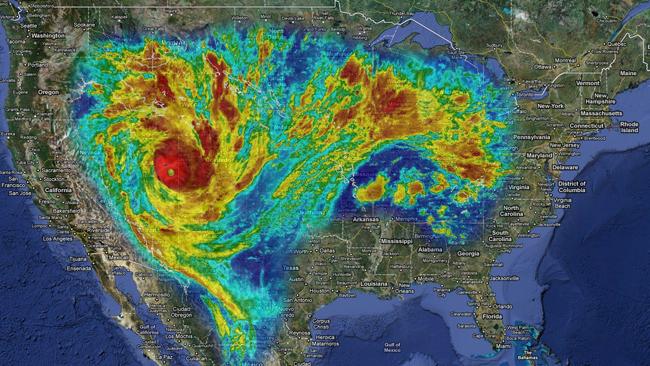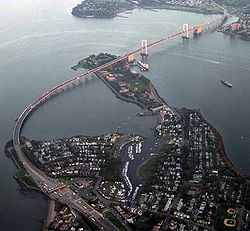
Recently I featured a piece about how turtle hatchlings change their movement strategy several times in just the first few hours of life in order to suit their changing needs as they move across different types of sand. Well, to go from the sublime to the ridiculous (or rather, just from the really small to the truly gargantuan) there’s a new paper out that shows that whale sharks, too, adjust the way they move according to their needs. This new work follows nicely after Phil Motta’s paper earlier this year, also discussed here, which took a comprehensive look at how whale sharks feed. Between them they make big strides in the autecologyof whale sharks. The new paper, by Adrian Gleiss and Rory Wilson from Swansea University and Brad Norman from ECOCEAN, describes work they did at Ningaloo reef in Western Australia, perhaps the world’s best studied aggregation area for whale sharks. They took a new type of accelerometer tag developed in Rory’s lab called a “daily diary” and deployed them on wild whale sharks to measure not only where they are (like traditional wildlife satellite tags) but also details about what the animals were doing: the beating of their tails and the rientation of their bodies in 3 dimensions. From this information they could basically reconstruct the animal’s actions with computer game-like accuracy (indeed, the software looks a lot like something for the X-Box!). The findings show  Whale shark with accelerometer tag. Photo: Steve Lindfieldan animal with a surprising diversity of movement modes and a sophisticated approach to minimising the amount of energy they spend moving through the ocean. They also help explain one of the most enduring mysteries of whale shark biology - a curious pattern of super-deep dives over the abyssal depths.
Whale shark with accelerometer tag. Photo: Steve Lindfieldan animal with a surprising diversity of movement modes and a sophisticated approach to minimising the amount of energy they spend moving through the ocean. They also help explain one of the most enduring mysteries of whale shark biology - a curious pattern of super-deep dives over the abyssal depths.
The first big observation is that whale sharks have 4 different types of dives and that these probably serve different purposes. It was well known from traditional tagging studies (sat tags record depth data as well as location) that whale sharks dive quite a lot throughout the day, but the new daily diary tags showed that not all dives are the same and, in fact, they could be easily discriminated as one of four main types based on what the depth profile looks like: yo-yo (probably searching), V (horizontal movement), U (feeding at depth), and bottom bouncing (searching at depth).
 Four dive types in whale sharks. (a) yo-yo, (b) V-shaped, (c) bottom bounce, (d) U-shaped
Four dive types in whale sharks. (a) yo-yo, (b) V-shaped, (c) bottom bounce, (d) U-shaped
The second and a really key finding is that all the dive types feature a gliding descent and an active ascent. In other words, they don’t beat their tails on the way down, but they do on the way up. Gliding converts their negative buoyancy (a sort of potential energy) into horizontal and vertical movement (kinetic energy). The fact that their dive has both vertical (depth) and horizontal (forward motion) components, without active use of the tail, shows that their bodies are adapted to convert sinking to swimming. Most of that effect comes from their pectoral fins, which serve as wings for gliding, but there is probably a big contribution from that incredibly broad head, which serves as a sort of lifting canard, a flat plane that creates lift at the front end. Gliding is an extremely efficient way to move; not only are they not spending energy operating their musculature to beat the tail through the water to create thrust, but the drag coefficient of water across their skin is a third as much when they glide as when they are actively beating their tails.
The third finding, which Gleiss and friends really go into in some, ahem, depth, is that angle of descent and ascent is consistently different for each type of dive and that they are optimal for whatever the purpose is. For example, a V dive is meant to cover a great horizontal distance, so the gliding descent is at a shallow angle and the ascent angle is the one that minimizes the amount of energy spent to gain horizontal distance. In contrast, the angles of a yo-yo dive minimize the amount of energy spent to gain vertical distance. The important point is that for any given purpose there is an optimal angle - one that uses the least energy for the most benefit - for both descent and ascent components. Whale sharks adapt the geometry of their dives to stay in that optimum zone and minimize the amount of energy they spend on whatever they are doing. Clever right? Well, its probably not a conscious decision, but rather a state of tremendous efficiency towards which they have evolved: natural selection is a powerful tutor.
 Diving geomtry in whale sharks. The angles of descent and ascent (the two thetas) are optimised for minimum energy expenditureIn the course of their study, the researchers solved one of the great mysteries of whale shark biology: the extraordinary deep dives whale sharks do when they are over abyssal depths (see the Brunnschweiler reference). These dives tend to happen around dawn and dusk and may exceed 1600m or more in depth; in fact, we don’t know just how far down they go, because most tags have a self-preservation device that cuts them free of the animal at 1600m, lest the tag be crushed by the immense pressure of the overlying water. We’re talking depths enough to turn a Styrofoam coffee cup into a shrinky-dink thimble, as well as changing enzyme kinetics and making the urea in their blood greatly more toxic, so the motivation to dive so deep must be compelling. There had been suggestions that they go down to rid themselves of parasites (as a parasitologist, I never bought that: parasites would easily co-evolve to tolerate such a strategy), or to clean their filter plates (at those depths particulate organic matter redissolves!) or even to “sleep”, although there is no evidence that sharks do so. Well, it turns out that they are dives of the V type, optimised to spend the least amount of energy while achieveing maximum horizontal movement (HD in the figure above). In other words, to travel far, they glide deep, and then gently beat their tails and ascend at a very shallow angle (steeper angles costing more energy and achieving less horizontal distance). This is a strategy best used during migratory phases when travelling, not feeding, is your number one priority.
Diving geomtry in whale sharks. The angles of descent and ascent (the two thetas) are optimised for minimum energy expenditureIn the course of their study, the researchers solved one of the great mysteries of whale shark biology: the extraordinary deep dives whale sharks do when they are over abyssal depths (see the Brunnschweiler reference). These dives tend to happen around dawn and dusk and may exceed 1600m or more in depth; in fact, we don’t know just how far down they go, because most tags have a self-preservation device that cuts them free of the animal at 1600m, lest the tag be crushed by the immense pressure of the overlying water. We’re talking depths enough to turn a Styrofoam coffee cup into a shrinky-dink thimble, as well as changing enzyme kinetics and making the urea in their blood greatly more toxic, so the motivation to dive so deep must be compelling. There had been suggestions that they go down to rid themselves of parasites (as a parasitologist, I never bought that: parasites would easily co-evolve to tolerate such a strategy), or to clean their filter plates (at those depths particulate organic matter redissolves!) or even to “sleep”, although there is no evidence that sharks do so. Well, it turns out that they are dives of the V type, optimised to spend the least amount of energy while achieveing maximum horizontal movement (HD in the figure above). In other words, to travel far, they glide deep, and then gently beat their tails and ascend at a very shallow angle (steeper angles costing more energy and achieving less horizontal distance). This is a strategy best used during migratory phases when travelling, not feeding, is your number one priority.
To recap then, whale sharks turn out to have at least 4 main types of dives, each serving a different purpose from feeding to horizontal travel, and the geometry of each type of dive is optimised to achieve the goal while minimising the energy cost. Overall, it paints a picture of an animal that is a paragon of efficiency, which is understandable given that they dwell in the nutrient-poor surface waters of the tropics, which are typically much less productive than the rich cold temperate and Arctic seas frequented by their fellow filter feeders: basking sharks and baleen whales. I suspect that future studies will show that whale sharks deploy these movement strategies to travel efficiently between hotspots of tropical productivity, be they fish spawning events or patches of seasonal tropical upwelling, and that they are therefore extremely strategic masters of the feeding/travelling trade-off.
Gleiss, A., Norman, B., & Wilson, R. (2010). Moved by that sinking feeling: variable diving geometry underlies movement strategies in whale sharks Functional EcologyDOI: 10.1111/j.1365-2435.2010.01801.x
Brunnschweiler, J., Baensch, H., Pierce, S., & Sims, D. (2009). Deep-diving behaviour of a whale shark during long-distance movement in the western Indian OceanJournal of Fish Biology, 74(3), 706-714 DOI: 10.1111/j.1095-8649.2008.02155.x
 Wednesday, February 2, 2011 at 8:19AM
Wednesday, February 2, 2011 at 8:19AM 





















